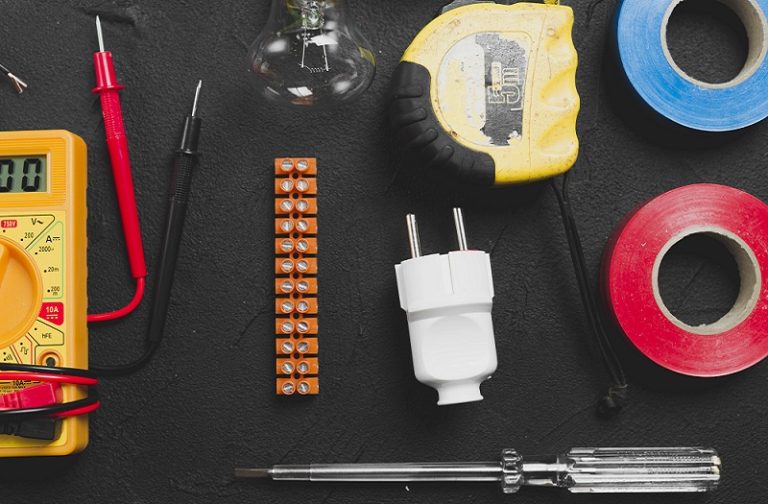The Lifeline of Liquids: Mastering Water Pump Upkeep
Electric Water Pump are indispensable in modern society, serving as the backbone of residential, agricultural, and industrial water supply. Their reliable operation is crucial for daily activities, from providing households with clean water to irrigating crops and running factories. Regular maintenance is not just a preventive measure, it’s a critical practice that ensures these vital systems continue to function efficiently and effectively, preventing unexpected failures and costly repairs. Embracing routine water pump maintenance is the key to sustaining the flow of life’s most essential resource.
Understanding your water pump:
Grasping the nuances of your water pump is pivotal for adept water pump maintenance. Each pump variant comes with its own set of care directives to ensure it runs smoothly and lasts longer. Let’s demystify the common types of water pumps and their bespoke maintenance protocols:
Centrifugal Pumps
• Functionality:
They harness the power of an impeller in motion to propel water using centrifugal force.
• Upkeep:
Regular inspections for seal integrity, impeller condition, and motor lubrication are essential.
Submersible Pumps
• Functionality:
These pumps operate while fully immersed, perfect for drawing water from deep sources.
• Upkeep:
It’s important to check the seals for water resistance and clear any debris from the filters.
Positive Displacement Pumps
• Functionality:
These pumps capture and transport a set volume of water, pushing it through the system.
Diaphragm Pumps
• Functionality:
Employing a diaphragm, these pumps are adept for variable flow conditions.
• Upkeep:
Regular checks for diaphragm wear and tear are crucial, with replacements as needed.
Dynamic Pumps
• Functionality:
They amplify water velocity before transforming it into pressure energy.
• Upkeep:
Ensuring the impeller’s smooth operation and checking the motor are vital maintenance steps.
Rotary Vane Pumps
• Functionality:
Featuring rotating vanes within a chamber, these pumps excel in moving water efficiently.
• Upkeep:
Monitoring vane condition and timely replacements form part of the maintenance routine.
Gear Pumps
• Functionality:
Utilizing interlocked gears, these pumps are effective for pumping thicker fluids.
• Upkeep:
Gear inspection for proper alignment and wear, coupled with consistent lubrication, and is recommended.
Peristaltic Pumps
• Functionality:
With a flexible tube, these pumps are ideal for transferring various fluids without contamination.
• Upkeep:
Tube replacement at regular intervals and roller inspections ensure smooth operation.
Recognizing the specific maintenance requisites of your pump is vital for its efficient function. While routine checks, cleanings, and part replacements are universally necessary, each pump type may have particular aspects that demand attention. For instance, submersible pumps require vigilant seal checks, whereas diaphragm pumps need frequent diaphragm assessments. Always consult the manufacturer’s manual for detailed maintenance guidance and adhere to a structured maintenance schedule to avert unexpected malfunctions and prolong your water pump’s lifespan.
Routine inspection of water pump
Conducting a regular inspections is a critical component of water pump maintenance, serving as a proactive measure to ensure optimal performance and to head off any impending issues. Here’s an overview of what should be included in a standard routine check:
Visual Examination
• Leak Detection:
Survey the pump and its vicinity for any indications of leaking water.
• Corrosion Scrutiny:
Inspect the pump’s exterior and connections for any signs of oxidation or deterioration.
• Component Evaluation:
Look over the pump parts for any indications of damage or wear.
Operational Review
• Auditory Check:
Listen attentively for any abnormal noises that could suggest internal complications.
• Vibration Monitoring:
Keep an eye out for unusual shaking, which could signal for issues.
• Pressure Measurement:
Confirm that the pump’s pressure is within the acceptable limits for its operation.
Maintenance Tasks
• Debris Removal:
Clear out any obstructions in filters and screens to maintain efficiency.
• Part Lubrication:
Apply lubricant to bearings to minimize wear and tear.
• Connection Securing:
Ensure all bolts and fittings are tightened to prevent leaks and maintain performance.
Electrical Assessment
• Wiring Inspection:
Examine all electrical connections for signs of wear or damage.
• Control Testing:
Make sure the pump’s control mechanisms are in proper working order.
Record-Keeping
• Documentation:
Maintain a log of all inspection results to monitor the pump’s condition over time.
• Inspection Planning:
Set a schedule for future inspections as part of a regular maintenance routine.
By adhering to a schedule of routine inspections, you can identify and rectify minor issues before they escalate into major concerns, thus safeguarding the durability and dependability of your water pump. It’s advisable to consult the manufacturer’s manual for specific maintenance instructions tailored to your pump model.
The heartbeat of maintenance, cleaning and lubrication
In the realm of water pump maintenance, the twin practices of purification and lubrication are main to the life-sustaining rhythms of a heart. These critical routines are the key factor of a water pump’s health, ensuring smooth operation and longevity. Let’s delve into the significance of these practices:
Purification:
The Pathway to Peak Performance
• Obstruction Clearance:
Keeping filters and screens free from debris is essential for a flawless water flow.
• System Purge:
Conducting systematic purges of the system helps eliminate any sediment accumulation, clogs that can degrade pump efficacy.
Lubrication:
The Essence of Effortless Operation
• Wear Prevention:
Adequate lubrication of the pump’s dynamic parts, like bearings and seals, is vital to reduce wear and prevent the risk of overheating.
• Appropriate Lubricant Use:
Selecting the lubricant specified by the pump’s manufacturer is crucial, as it is designed to meet the particular requirements of your pump’s machinery.
Safeguarding Electrical Components in Water Pump Care
Preserving the electrical components is a vital chapter in the book of water pump maintenance. It’s about ensuring the electrical aspects of your pump are in top-notch condition for reliable and safe operations. Here’s we discuss about how to protect the electrical heart of your water pump:
Electrical Component Vigilance
• Inspection Regimen:
Conduct routine examinations of the pump’s electrical wiring and fixtures for any deterioration or damage.
• Securing Connections:
Verify that all electrical junctions are firmly connected to prevent energy loss and potential safety risks.
• Motor Maintenance:
Regularly clean the motor’s airways and coils as per the manufacturer’s instructions to prevent debris accumulation.
• Electrical Testing:
Employ specialized equipment to assess the insulation integrity of the motor windings and confirm the condition of fuses and indicators.
Implementing Surge Protectors
• Guarding Against Spikes:
Surge protectors play a crucial role in defending your water pump from unexpected voltage surges due to environmental or grid disturbances.
• Damage Prevention:
These devices act as a shield, channelling away the excess electrical energy to avert harm to the pump’s motor and electronic controllers.
• Promoting Durability:
The addition of surge protectors is an investment in the pump’s durability, offering a safeguard against unpredictable electrical events.
By attentively monitoring and maintaining the electrical elements of your water pump and integrating surge protectors, you can ensure the enduring operation and safety of your essential water management asset.
Tailoring Maintenance to Your Pump’s Unique Needs
Condition-based monitoring (CBM) is a maintenance strategy that optimizes the performance and longevity of equipment, such as pumps, by tracking their real-time operational data. This approach focuses on the actual condition of the equipment rather than following a predetermined maintenance schedule. Here’s an overview of how CBM, with its real-time data monitoring, can be beneficial:
Real-Time Data Monitoring
• Instantaneous Insights:
CBM systems provide immediate feedback on a pump’s performance, capturing data such as vibration levels, temperature, pressure, and flow rates.
• Trend Analysis:
Over time, the collected data can be analyzed to identify trends that may indicate developing issues or wear and tear.
• Alerts and Alarms:
The system can be configured to trigger alerts when certain parameters exceed predefined thresholds, allowing for swift intervention.
Customized Maintenance
• Maintenance When Needed:
Unlike routine maintenance, CBM allows for maintenance activities to be performed based on the actual condition of the pump, which can prevent both under-maintenance and over-maintenance.
• Targeted Repairs:
By pinpointing the specific issue, CBM enables maintenance teams to focus their efforts where it’s needed most, avoiding unnecessary work on other components.
• Resource Optimization:
Maintenance resources, including time, labor, and parts, can be allocated more efficiently, as CBM provides clarity on what needs attention and when.
Benefits of CBM
• Enhanced Equipment Reliability:
By addressing issues before they escalate, CBM contributes to the overall reliability and availability of the pump.
• Extended Equipment Life:
Regular monitoring and timely maintenance can extend the operational life of the pump, as wear and tear are managed effectively.
• Improved Safety:
Real-time monitoring can also enhance safety by reducing the risk of catastrophic failures that could endanger personnel or the environment.
• Cost Savings:
CBM can lead to significant cost savings by reducing unplanned downtime, minimizing the frequency of repairs, and optimizing the use of spare parts.
Condition-based monitoring represents a smart and efficient approach to pump maintenance. By leveraging the power of real-time data and customizing maintenance activities to the unique conditions of each pump, facilities can achieve better performance, reduce costs, and maintain a high standard of operational excellence.
When to call the professionals
When it comes to maintaining water pumps, there are certain issues that require the expertise of professionals. Identifying these issues early and seeking professional maintenance services can save time, money, and prevent potential hazards. Here’s a guide on when to call in the experts:
Identifying Issues That Require Expert Attention
• Unusual Noises:
If your pump starts making strange sounds such as grinding, banging, or whining, it could indicate serious internal problems.
• Leakage:
Any signs of leakage around the pump, especially near seals and gaskets, should be addressed by professionals to prevent further damage.
• Vibration:
Excessive vibration can be a sign of misalignment or imbalance, which needs precise correction by a specialist.
• Pressure Fluctuations:
Sudden changes in water pressure could point to issues with the pump’s components, requiring professional diagnostics.
• Electrical Problems:
Any electrical issues, such as short circuits or frequent tripping of circuit breakers, should be handled by qualified technicians to ensure safety.
The Value of Professional Maintenance Services
• Expert Diagnostics:
Professionals have the tools and knowledge to accurately diagnose and resolve complex issues with your water pump.
• Quality Repairs:
Certified technicians can provide high-quality repairs that adhere to industry standards, ensuring the longevity of your pump.
• Warranty Preservation:
Regular professional maintenance can help maintain your pump’s warranty, protecting your investment.
• Safety:
Professionals are trained to handle maintenance safely, reducing the risk of accidents or injuries.
• Efficiency:
Expert services can ensure that your pump operates at optimal efficiency, saving energy and reducing operational costs.
While routine water pump maintenance can often be performed in-house, there are times when professional services are invaluable. By recognizing the signs that indicate the need for expert attention and valuing the benefits of professional maintenance, you can ensure that your water pumps remain reliable and efficient components of your infrastructure.
Conclusion
The upkeep of water pumps is an essential aspect that necessitates meticulous attention, a forward-thinking stance, and at times, the acumen of seasoned experts. Whether it’s through the deployment of condition-based monitoring systems that customize maintenance to the pump’s particular requirements, or the formulation of exhaustive maintenance checklists that navigate the path to dependability, each tactic is instrumental in the seamless functioning of water pumps.
The assimilation of real-time data monitoring grants a discerning comprehension of the pump’s state, paving the way for well-grounded choices and opportune maintenance actions. Furthermore, the significance of compiling detailed maintenance logs is paramount, as they furnish critical insights for anticipatory analysis and fiscal oversight.
In essence, the essence of water pump maintenance transcends mere failure prevention; it involves a comprehensive strategy that bolsters efficiency, assures safety, and streamlines costs. By adopting these tenets, establishments are poised to reach an apex of operational distinction, redefining the benchmarks for water pump maintenance and ensuring these indispensable mechanisms fulfill their pivotal functions with unwavering efficiency and dependability.







